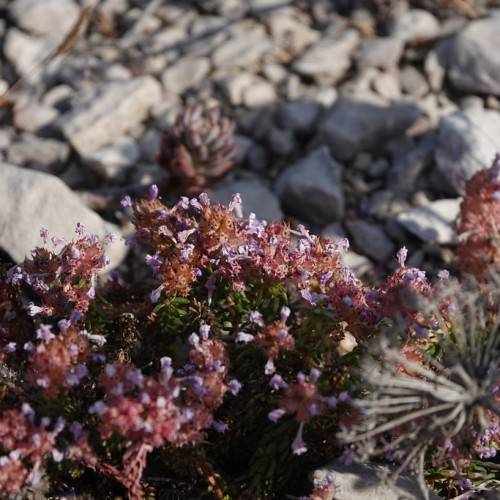
thyme
Thymus vulgaris
Also Known As - garden thymeCycle:
Herbaceous Perennial
Watering:
Minimum
Hardiness Zone:
5 - 9
Flowers:
Flowers In Summer
Sun:
Full sun
Soil:
Well-drained
Fruits:
Fruits Ready In Summer
Leaf:
Yes
Growth Rate:
Moderate
Maintenance:
Low
Drought Tolerant:
Yes
Salt Tolerant:
Yes
Care Level:
Medium
watering
Thyme (Thymus vulgaris) generally thrives with 1-2” (2.5-5 cm) of water per week. Water the soil thoroughly to keep the soil slightly moist, avoiding both extremes of too much water or letting the soil dry out completely. During hot and dry conditions, it may be necessary to water more frequently. However, be careful not to water too often as this can lead to root rot. In general, it helps to wait until the top inch (2.5 cm) of soil feels dry before watering again.
sunlight
Thyme (Thymus vulgaris) plants prefer bright sunlight to thrive and should receive at least 8-10 hours of direct sunlight during the peak growing season. However, this depends on the climate; in regions with intense, hot summer afternoons, it may be beneficial to provide some afternoon shade for the plant to avoid wilting and sunburn. Thyme grows best in full sun in temperate climates with relatively cool evenings. It is also important to note that it requires protection from cold winds, so it should be planted in a location sheltered from gusts.
pruning
Thyme (Thymus vulgaris) should be pruned lightly throughout the growing season to keep the plants neat and tidy and promote the growth of new shoots. Pruning may be done in early summer, late summer and early autumn, after flowering. To prune thyme, remove any old flower heads, dead or damaged branches, weak stems and any unproductive woody growth. Then, trim the remaining stems back to the desired size, making sure not to cut too far into the woody area of the plant. If pruning is done too early in the season, you may lose some flowers.
